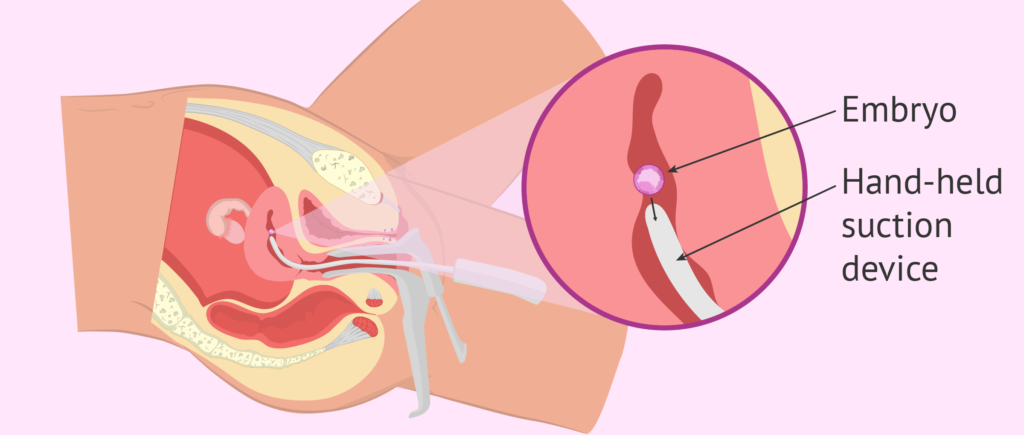Surgical abortion in Nepal
Surgical abortion : Overview
Surgical abortion are also called in-clinic abortions. They are typically more effective than a medical abortion, with a lower risk of an incomplete procedure.
The two types of Surgical abortion are:
- aspiration abortions (the most common type of surgical abortion)
- dilation and evacuation (D&E) abortions
Women up to 12 weeks pregnant can have an aspiration abortion. The average clinic visit will last up to three to four hours for this type of abortion. The procedure itself should take 15 to 20 minutes.
Aspiration abortions, also called vacuum aspirations, are the most common type of surgical abortion. During this procedure, you’ll be given pain medication, which can include a numbing medication that is injected into the cervix. You may also be given a sedative, which will allow you to stay awake but be extremely relaxed.
Your doctor will first insert a speculum and examine your uterus. Your cervix will be stretched open with dilators either before or during the procedure. Your doctor will insert a tube through the cervix into the uterus, which is attached to a suction device. This will empty the uterus. Many women will feel mild to moderate cramping during this portion of the procedure. The cramping typically decreases after the tube is removed from the uterus.
Immediately after the procedure, your doctor may check your uterus to ensure that it is completely empty. You’ll be given antibiotics to prevent infection.
It is recommended to rest for the rest of the day after the abortion. Some will be able to return to most normal activities (except for heavy lifting) the next day, though some may take an extra day or so.
Surgical abortion : Preparation
Before your surgical abortion, you’ll meet with a healthcare provider who will go over all of your options with you to help you find the right one. Before the appointment for your abortion, there will be some preparation required, including:
- Arrange for someone to drive you home after the procedure.
- You can’t eat for a certain amount of time before the procedure, which will be specified by your doctor.
- If your doctor gives you pain or dilation medication at an appointment before the procedure, follow the instructions carefully.
- Don’t take any medications or drugs for 48 hours before the procedure without discussing it with your doctor first. This includes aspirin and alcohol, which can thin the blood.
Surgical abortion : Common side effects
Immediately after the procedure and during the recovery period, you may experience some side effects. Common side effects of Surgical abortion include:
- bleeding, including blood clots
- cramping
- nausea and vomiting
- sweating
- feeling faint
Once your healthcare provider ensures that your health is stable, you will be discharged home. Most women experience vaginal bleeding and cramping similar to a menstrual cycle for two to four days.
Surgical abortion : Potential risks and complications
While abortions are typically extremely safe and most women have no complications outside of common side effects, the likelihood of complications increases slightly as the gestational period increases.
Potential complications from Surgical abortion include:
- Infection: can be serious and may require hospitalization. Symptoms include fever, abdominal pain, and unpleasant-smelling vaginal discharge. The chance of infection increases if you have a sexually transmitted infection.
- Cervical tears or lacerations: can often be resolved with stitches after the procedure if necessary.
- Uterine perforation: which can occur when an instrument punctures the uterine wall.
- Hemorrhaging: which can result in bleeding sufficient enough that a blood transfusion or hospitalization is needed.
- Retained products of conception: when part of the pregnancy is not removed.
- Allergic or adverse reactions to medications: including pain medication, sedatives, anesthesia, antibiotics, and/or dilation medication.
Surgical abortion : When to see your doctor
Some side effects are symptoms of potentially emergent conditions. You should call your clinic or seek immediate medical attention if you experience the following symptoms:
passing blood clots that are larger than a lemon for more than two hours
bleeding that is heavy enough that you have to change your pad twice in one hour for two hours straight
foul-smelling vaginal discharge
fever
pain or cramping that gets worse instead of better, especially after 48 hours
pregnancy symptoms that persist after one week
Menstruation cycle and love making
Your period should return four to eight weeks following your abortion. Ovulation can occur without noticeable signs or symptoms, and often before you resume normal menstrual cycles, so you should always use contraception. You should wait for at least one to two weeks after the abortion for love making, which can help reduce the risk of infection. You should also wait for this period of time to use tampons, or insert anything into the vagina.

